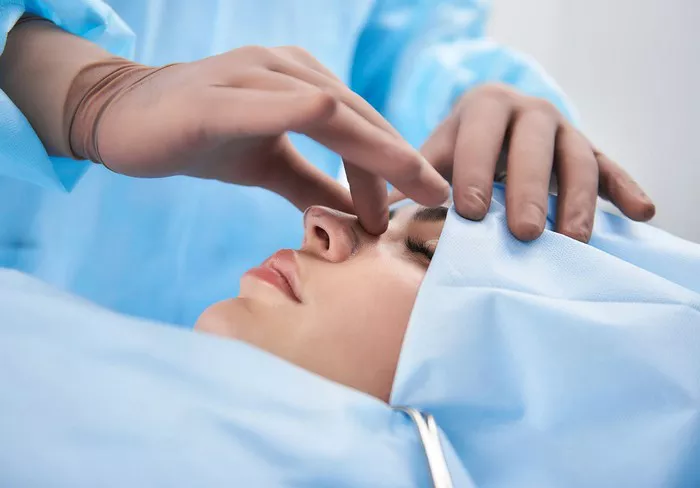Rhinosurgery, also known as nasal surgery, is a type of surgical procedure that is performed to correct functional or aesthetic issues with the nose. Whether you are experiencing breathing difficulties or are unhappy with the appearance of your nose, rhinosurgery can be a safe and effective option. In this article, we will explore what rhinosurgery is, the different types of rhinosurgery procedures, and what to expect during and after the procedure.
What is Rhinosurgery?
Rhinosurgery is a surgical procedure that is performed to correct functional or aesthetic issues with the nose. The procedure can be performed for a variety of reasons, including correcting a deviated septum, improving the appearance of the nose, or addressing breathing problems.
During the procedure, the surgeon may make incisions inside the nostrils or on the outside of the nose, depending on the extent of the reshaping required. The surgeon may then remove or rearrange bone and cartilage to achieve the desired shape and size of the nose. The incisions are then closed with sutures, and the nose is typically splinted to support the new shape during the healing process.
Types of Rhinosurgery Procedures
There are several types of rhinosurgery procedures that can be performed, depending on the individual’s needs and goals. These include:
Septoplasty: This procedure is typically performed to correct a deviated septum, which can cause breathing difficulties and other health problems.
Rhinoplasty: This procedure is typically performed to improve the appearance of the nose, such as correcting a hump or bump on the bridge of the nose or reducing the size of the nose.
Turbinate reduction: This procedure is typically performed to reduce the size of the turbinates, which are structures inside the nose that help to filter and humidify air.
Sinus surgery: This procedure is typically performed to address chronic sinusitis or other sinus-related issues.
What to Expect During the Procedure
Rhinosurgery is typically performed under general anesthesia, although local anesthesia with sedation may be used for less extensive procedures. The procedure can take several hours, depending on the extent of the reshaping required.
After the anesthesia has taken effect, the surgeon will make the necessary incisions and begin reshaping the nose. The surgeon may remove or rearrange bone and cartilage to achieve the desired shape and size of the nose. Once the reshaping is complete, the incisions are closed with sutures and the nose is typically splinted to support the new shape during the healing process.
What to Expect After the Procedure
After the procedure, patients can expect some swelling, bruising, and discomfort in the days and weeks following the procedure. The nose may also feel congested or stuffy, and patients may experience some bleeding or drainage from the nose.
It is important to follow all post-operative instructions provided by your surgeon, including taking any prescribed medications, avoiding strenuous activity, and keeping the head elevated while sleeping. Most patients are able to return to work and normal activities within 1-2 weeks after the procedure.
Potential Complications
While rhinosurgery is generally safe, there are some potential complications that patients should be aware of. These can include:
Infection: Infection is a rare but serious complication that can occur after any surgical procedure. Patients should watch for signs of infection, such as fever, redness, and swelling, and contact their surgeon immediately if they suspect an infection.
Bleeding: Bleeding is also a rare but serious complication that can occur after rhinosurgery. Patients should avoid aspirin and other blood-thinning medications before the procedure, and should contact their surgeon immediately if they experience any excessive bleeding.
Scarring: While scarring is a normal part of the healing process, some patients may experience more noticeable scarring after rhinosurgery. Your surgeon can provide guidance on how to minimize scarring and promote healing.
Conclusion
Rhinosurgery can be a safe and effective way to improve the function and appearance of the nose. Whether you are experiencing breathing difficulties or are unhappy with the appearance of your nose, rhinosurgery can help you achieve your goals. By understanding the different types of rhinosurgery procedures, what to expect during and after the procedure, and potential complications, patients can make an informed decision about whether rhinosurgery is right for them.

